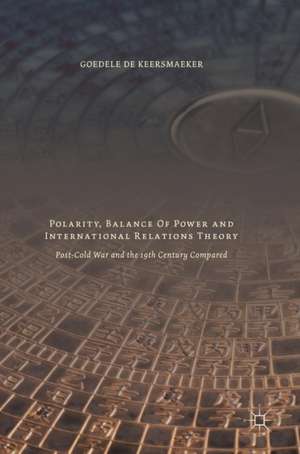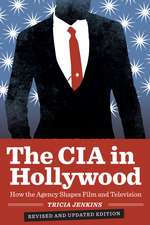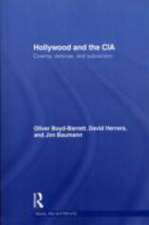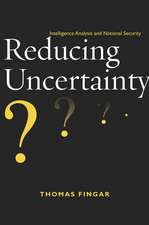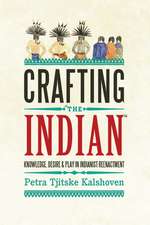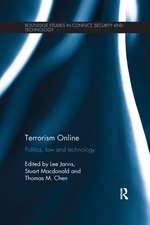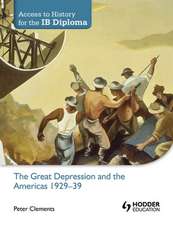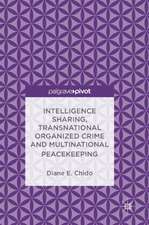Polarity, Balance of Power and International Relations Theory: Post-Cold War and the 19th Century Compared
Autor Goedele De Keersmaekeren Limba Engleză Hardback – 15 dec 2016
| Toate formatele și edițiile | Preț | Express |
|---|---|---|
| Paperback (1) | 523.72 lei 6-8 săpt. | |
| Springer International Publishing – 4 iul 2018 | 523.72 lei 6-8 săpt. | |
| Hardback (1) | 699.77 lei 6-8 săpt. | |
| Springer International Publishing – 15 dec 2016 | 699.77 lei 6-8 săpt. |
Preț: 699.77 lei
Preț vechi: 823.26 lei
-15% Nou
133.92€ • 145.41$ • 112.49£
Carte tipărită la comandă
Livrare economică 22 aprilie-06 mai
Specificații
ISBN-10: 3319426516
Pagini: 250
Ilustrații: XI, 247 p.
Dimensiuni: 148 x 210 x 20 mm
Greutate: 0.5 kg
Ediția:1st ed. 2017
Editura: Springer International Publishing
Colecția Palgrave Macmillan
Locul publicării:Cham, Switzerland
Cuprins
Chapter 2: Polarity: the emergence and development of a concept. 8
Polarity thinking during the Cold War and after. 9<
Polarity: metaphor and scientific concept. 11
Polarity definitions in IR theory: the influence of Kenneth Waltz. 13
Cluster polarity. 15
Power polarity: hierarchic and numeric definitions. 19
Polarity and power definitions and relations between powers. 29
Polarity, international systems and international societies. 31
Conclusion: Different definitions do they really matter?. 33
PART II: POLARITY IN THE COLD WAR, THE 19TH CENTURY AND TODAY. 36
Chapter 3: The bipolar Cold War and polarity theory. 37
A two superpowers world?. 38
A polarised world: cluster polarity after 1945. 42
Conclusion: The Cold War and polarity thinking. 47
Chapter 4: The 19th century: multipolar, bipolar or unipolar?. 49
European and global power polarity: some indicators. 52<
Power polarity in 19th century in Europe. 56
Global polarity in the 19th century. 62
Great Britain and the British Empire. 65
Conclusion a unipolar world and a balanced’ Europe. 71
Cluster polarity in Europe. 72
Conclusions cluster polarity. 80
Chapter 5: Polarity after 1990, a historical comparison. 82
Some problems and omissions in polarity analysis. 84
Power polarity in the 21st century. 92
Cluster polarity in the 21st century a mixed Cold War heritage. 99
Unipolarity, balance of power and balancing. 105
Conclusions: a unipolar, bipolar or multipolar world?. 108
PART III: 19th CENTURY BALANCE OF POWER AND 21st CENTURY MULTIPOLARITY. 112
Chapter 6: The French multipolarity discourse. 113
Introduction: Balance of power and polarity, past and present. 113
The French multipolar discourse. 115
Multipolarity: actual facts and developments in the French discourse. 120
Multipolarity and stability in the French discourse. 121
Multipolarity, great power governance and multilateralism.. 124
Multipolarity and regional blocs. 125
Power concepts in the French discourse. 134
Cultural power and international pluralism.. 135
Conclusions: multipolarity in the French discourse. 136
Chapter 7: American hegemony, empire and unipolarity. 139
Unipolarity, hegemony and empire, 1990-2008. 139
The year 2008 as the turning point in the American discourse. 147
Conclusion and comparison with the French multipolar discourse. 154
Chapter 8: Polarity, balance of power and universal monarchy. 157
Differences between balance of power and multipolarity discourse. 157
Balance of power as an equal distribution of power. 159
Balance of power and great power status. 160
Balance of power, economic power, military force and war. 162
Balance of power, universal monarchy and (political) pluralism.. 163
Balance of power and cultural pluralism.. 165
Balance of power, the rule of law and the Concert of Europe. 165
Balance of power, peace and stability. 166
Conclusions: multipolarity, hegemony and balance of power. 167
PART IV: CONCLUSIONS, THE RELEVANCE OF POLARITY THEORY?. 172
Polarity as a structural defining element in Neorealist theory. 172
Balance of power and polarity in the public political discourse. 178
Notes. 181
Bibliography. 184
Index. 202
Notă biografică
Goedele De Keersmaeker is a researcher at the Ghent Institute of International Studies (GIIS). She is a former director of the International Peace Information Service (Antwerp) and of the Helsinki Citizens’ Assembly (Prague). Goedele has a vast experience of educational writing on international relations and security, with particular research interests in a historical approach to international relations.
Textul de pe ultima copertă
The book discusses the rise of polarity as a key concept in International Relations Theory. Since the end of the Cold War, until at least the end of 2010, there has been a wide consensus shared by American academics, political commentators and policy makers: the world was unipolar and would remain so for some time. By contrast, outside the US, a multipolar interpretation prevailed. This volume explores this contradiction and questions the Neorealist claim that polarity is the central structuring element of the international system. Here, the author analyses different historic eras through a polarity lens, compares the way polarity is used in the French and US public discourses, and through careful examination, reaches the conclusion that polarity terminology as a theoretical concept is highly influenced by the Cold War context in which it emerged. The book is an important resource for students and researchers with a critical approach to Neorealism, and to those interested in the defining shifts the world went through during the last twenty five years.
Caracteristici
- Provides inventory of different polarity definitions and their application to the 19th century and the post-Cold War era
- Offers an analysis of the French multipolar discourse and its comparison with the American (non)-use of polarity
Descriere
This book discusses the rise of polarity as a key concept in International Relations Theory. Since the end of the Cold War, until at least the end of 2010, there has been a wide consensus shared by American academics, political commentators and policy makers: the world was unipolar and would remain so for some time. By contrast, outside the US, a multipolar interpretation prevailed. This volume explores this contradiction and questions the Neorealist claim that polarity is the central structuring element of the international system. Here, the author analyses different historic eras through a polarity lens, compares the way polarity is used in the French and US public discourses, and through careful examination, reaches the conclusion that polarity terminology as a theoretical concept is highly influenced by the Cold War context in which it emerged. This volume is an important resource for students and researchers with a critical approach to Neorealism, and to those interested in the defining shifts the world went through during the last twenty five years.
